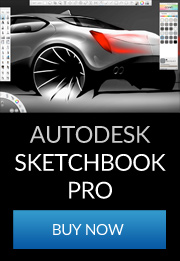Aerodynamic factors, considered carefully, can improve many aspects of a vehicle. Some key aerodynamic considerations have been summarised here.
[(vi) refers to Road Vehicle Aerodynamic Design by R.H. Barnard]
With an object moving through a fluid, the wake is extremely significant. When considering family vehicles, the nature of the vehicle’s rear, in three dimensions, can make the difference between a low or a high coefficient of drag (Cd).
Improvements at the front can be made by ensuring the ‘front end is made as a smooth, continuous curve originating from the line of the front bumper’. On normal two and three box shapes, drag is often caused by high pressure just upstream of the front windscreen, ‘often with a separation bubble of recirculating air at the base of the screen’. The magnitude of this effect depends upon the windscreen ‘rake angle’. Making the screen more raked (ie. not as upright) ‘tends to reduce the pressure at the base of the screen, and to lower the drag’. However, much of this improvement arrives because a more sloped screen means a softer angle at the top where it meets the roof, keeping flow attached. Similar results can be achieved through a suitably curved roof.
Design in plan as well as profile, is significant. ‘Curving the windscreen in plan view modifies the flow patterns considerably … which reduces the extent and intensity of high pressure.’
The A-post is also an issue: ‘A strong outward cross-flow can occur towards the edges of the windscreen, tending to produce separated vortices around the A-posts.’ These effects can be minimised by smoothing the form of the A-post and increasing the curvature of both the A-post and the screen. Smoothing the transition from the body to door mirror is also significant as it can otherwise be a major source of drag and wind noise.
At the rear of vehicles, the ideal format is a long and gradual slope. As this is not practical, it has been found that ‘raising and/or lengthening the boot generally reduces the dragâ€.
Results of research state that drag due to rear slope angle will be at its ‘peak at 30º and minimum at around 10º’.
Increasing the curvature of the roofline will also reduce the drag coefficient. Benefits are gained by bringing the roof line down at the front and rear. Simply ‘bulging the roofline up’ however, may cause such an increase in frontal area that any gains may be negated.
In plan view, rounding corners and ‘all forward facing elements’ will reduce drag. Increases in curvature of the entire vehicle in plan will usually decrease drag provided that frontal area is not increased. ‘Tapering the rear in plan view’, usually from the rear wheel arch backwards, ‘can produce a significant reduction in drag’. Under the vehicle, a smooth surface is desirable as it can reduce both vehicle drag and surface friction drag. ‘For a body in moderate proximity to the ground, the ideal shape would have some curvature on the underside.’
In (vi), the author lists the following significant areas for thought when attempting to design a typical car (not a sports car or commercial vehicle):
- Smooth unbroken contours with favourable pressure gradients as far back as practical should be used.
- Strongly unfavourable pressure gradients at the rear should be avoided; some taper and rear end rounding should be used.
- The form should produce negligible lift.
A If a hatchback configuration is required, the backlight angle should not be in the region of 30º, and if a notchback (saloon) is to be used, the effective slope angle (ie. the angle of a direct line between the roof and the highest, most rearward point) should also not be in the region of 30º.
- The underbody should be as smooth and continuous as possible, and should sweep up slightly at the rear,
- There should be no sharp angles (except where it is necessary to avoid cross-wind instability).
- The front end should start at a low stagnation line, and curve up in a continuous line.
- The front screen should be raked as much as is practical.
- All body panels should have a minimal gap.
- Glazing should be flush with the surface as much as possible.
- All details such as door handles should be smoothly integrated within the contours.
- Excrescences should be avoided as far as possible; windscreen wipers should park out of the airflow.
- Minor items such as wheel trims and wing mirrors should be optimised using wind-tunnel testing.
- The cooling system needs to be designed for low drag.
Although aerodynamic concerns are not as strong in this vehicle as they may be in a sports car, for example, the basic principles outlined here should be observed throughout the design process. Energy efficiency can be improved with low drag and low levels of wind noise improve passenger comfort.
Previous Post
Leave a Reply

